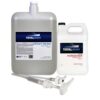Your bag is empty
Don't miss out on great deals! Start shopping or Sign in to view products added.
Shop What's New Sign in Progressive International Dynamics PD4045KV Inteli-Power 4000 Series Converter with Charge Wizard - 45 Amp
Progressive International Dynamics PD4045KV Inteli-Power 4000 Series Converter with Charge Wizard - 45 Amp
 100-Pack 5-Inch 8-Hole Hook and Loop Sanding Discs 320-Grit
100-Pack 5-Inch 8-Hole Hook and Loop Sanding Discs 320-Grit
 45 Toilet Bags for Portable Potty Bags for Portable Toilet Camping Boating Outdoors & Car Compost Biodegradable Portable Toilet Bags for 5 Gallon Bucket Toilet Seat Poop Bags 5 Gal Human Waste Bag
45 Toilet Bags for Portable Potty Bags for Portable Toilet Camping Boating Outdoors & Car Compost Biodegradable Portable Toilet Bags for 5 Gallon Bucket Toilet Seat Poop Bags 5 Gal Human Waste Bag
 Truetimber 2300-Watt Super Quiet Gasoline Powered Inverter Generator by Pulsar, CARB Compliant
Truetimber 2300-Watt Super Quiet Gasoline Powered Inverter Generator by Pulsar, CARB Compliant
 TotalBoat 5:1 Epoxy Resin Kit (Gallon, Slow Hardener), Marine Grade Epoxy for Fiberglass and Wood Boat Building and Repair
TotalBoat 5:1 Epoxy Resin Kit (Gallon, Slow Hardener), Marine Grade Epoxy for Fiberglass and Wood Boat Building and Repair
| Dimensions | 4.25 × 0.5 × 6 cm |
|---|---|
| ASIN | 1591932548 |
| Publisher | Adventure Publications; Illustrated edition (December 3, 2010) |
| Language | English |
| Paperback | 200 pages |
| ISBN-10 | 9781591932543 |
| ISBN-13 | 978-1591932543 |
| Item Weight | 8.3 ounces |
| Dimensions | 4.25 x 0.5 x 6 inches |
Reviews
There are no reviews yet.